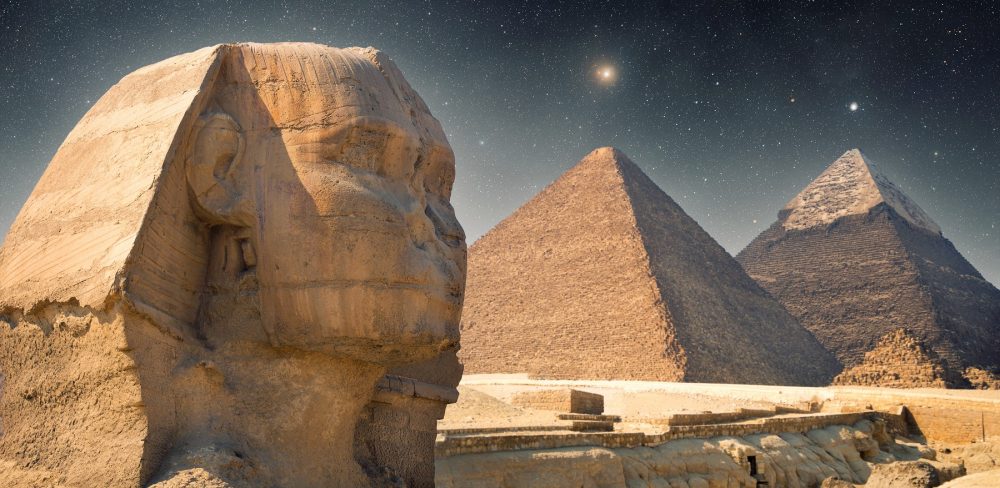For centuries, the Great Sphinx of Giza has stood as a silent witness to the sands of time, its mysteries captivating scholars and mystics alike. Let's delve into the heart of these ancient riddles, exploring the Sphinx's lost history and the secrets it may still hold.
The Missing Nose
The Great Sphinx of Giza, a colossal statue that has withstood the test of time, is marked by one notable absence: its nose. Common folklore often wrongfully accuses Napoleon Bonaparte of its destruction, a myth perpetuated through time. However, historical records clarify that the damage occurred much earlier. It’s widely believed that a medieval Muslim ruler, in an act driven by religious iconoclasm, vandalized the Sphinx, viewing it as a pagan idol. This destruction is not just a matter of physical alteration but also symbolizes the myriad ways in which the Sphinx has been interpreted and reinterpreted through the ages. This act of vandalism opens up a discussion on how historical and cultural perceptions have shaped our understanding of this ancient monument.
The Sphinx’s True Identity: A Historical Puzzle
Determining who is represented by the Sphinx’s enigmatic face has been a topic of intense scholarly debate. Traditional Egyptology often credits Pharaoh Khafre with its construction, suggesting that the face is his own. However, this attribution is not without controversy. Alternative theorists, and some historians, argue that the Sphinx predates the time of Khafre, suggesting a far older origin. They point to the disproportionate size of the head compared to the body as evidence that the Sphinx might have originally had a different visage, which was later modified. This theory not only challenges established timelines but also invites us to reconsider our understanding of the early dynastic period of Egyptian history.
The Sphinx and the Constellation of Leo: An Astronomical Link?
Some researchers have proposed a fascinating astronomical angle to the Sphinx’s origin. They suggest that the Sphinx was originally designed to represent the constellation Leo. This theory posits that the ancient Egyptians, known for their advanced astronomical knowledge, aligned the Sphinx with this constellation as part of a grand celestial scheme. The idea of the Sphinx mirroring a constellation adds a layer of intrigue, suggesting that it was not just a terrestrial guardian but also a celestial marker. While this theory is not universally accepted, it underscores the complexity of ancient Egyptian cosmology and their integration of astronomy into monumental architecture.
Anubis and the Sphinx: Reimagining Ancient Symbolism
One of the more radical theories about the Sphinx’s original form connects it to Anubis, the jackal-headed god associated with mummification and the afterlife. Observers who support this theory point out similarities between the Sphinx’s body and that of a crouching canine, rather than a lion. This perspective is bolstered by references in ancient texts, where Anubis is often depicted as guarding the necropolis. The transformation from Anubis to a human-headed Sphinx might have involved the removal of the ears and the reshaping of the face, an act that symbolizes the deep religious and cultural changes in ancient Egyptian society over the millennia.
The Sphinx in the Grand Design?
The Sphinx’s placement within the Giza Necropolis is no accident; it is part of a meticulously planned complex. This architectural marvel, consisting of the Sphinx and the three great pyramids, is believed to represent a harmonious cosmic diagram. The alignment and positioning of these structures suggest a sophisticated understanding of geometry and spatial relationships. The inclusion of the Sphinx in this grand design underscores its significance not only as a standalone monument but also as a crucial piece in the larger puzzle of the Giza plateau. The relationship between the Sphinx and the pyramids, both in terms of their physical layout and symbolic meanings, continues to be a source of fascination for historians, archaeologists, and enthusiasts of ancient Egyptian culture.
The Great Sphinx of Giza remains one of the most captivating and enigmatic monuments of the ancient world, at least for me. Its enduring legacy, marked by a blend of historical, mythological, and astronomical significance, continues to challenge and inspire. As we continue to unearth its secrets, the Sphinx serves as a profound reminder of the depth and complexity of ancient Egyptian civilization, a civilization that continues to intrigue and enlighten the modern world.





